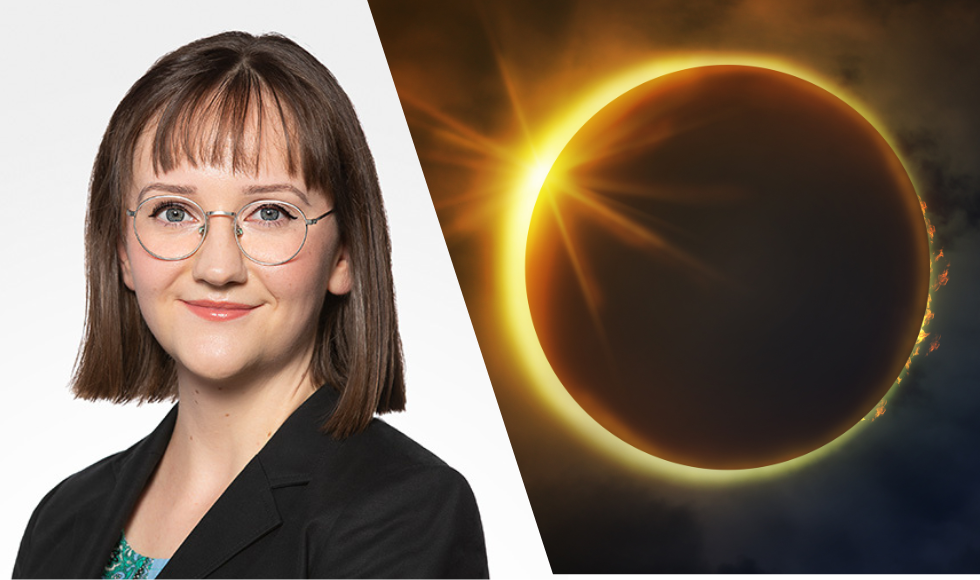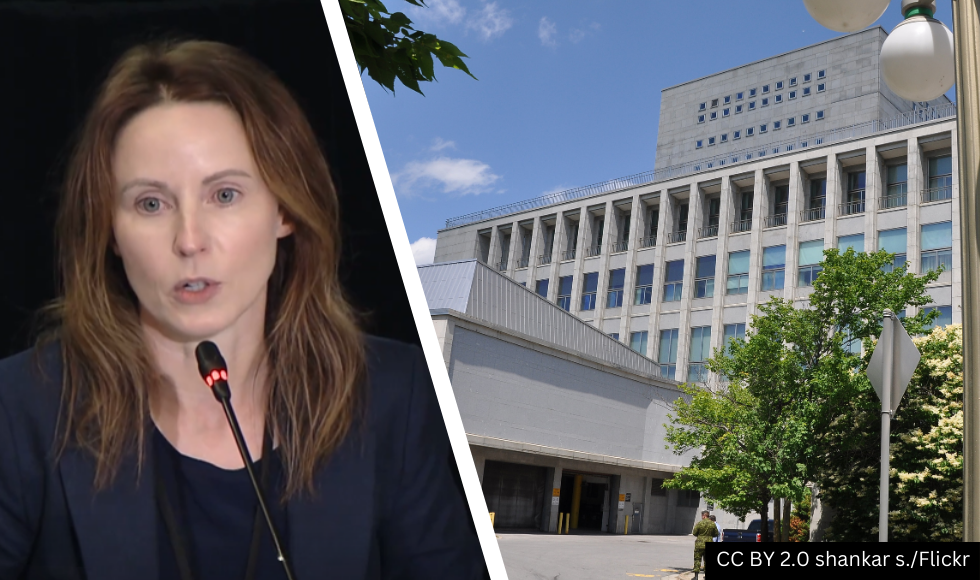‘The sun will be turned to darkness and the moon to blood’: eclipse and apocalypse in religious texts

Eclipses have had a special significance in the human conscience throughout recorded history. Postdoctoral fellow Abby Kulisz talks about eclipses in Christian and Islamic texts.
By a cosmological chance, the April 8 eclipse coincided with the final week of class for “Apocalypse Then and Now”, a Religious Studies course taught by postdoctoral fellow Abby Kulisz.
To mark the occasion, Kulisz tasked students with exploring the themes related to eclipse and apocalypse in ancient religious texts.
Kulisz, a scholar of ancient religious texts as literature, is fascinated by the literary devices used in scripture.
That means that she’s fascinated by the literary devices used by ancient writers to convey the word of God and tell the stories of Jesus’ crucifixion and judgement day, among others.
Kulisz cites three religious texts — two from the Bible and one from the Qur’an — that refer to eclipses.
44 It was now about noon, and darkness came over the whole land[a] until three in the afternoon,
45 while the sun’s light failed,[b] and the curtain of the temple was torn in two.
46 Then Jesus, crying out with a loud voice, said, “Father, into your hands I commend my spirit.” Having said this, he breathed his last.
The word “apocalypse” comes from the Greek “apocalypsis”, meaning “things that have been revealed”, or “revelation of the truth”. When Jesus dies on the cross, his true nature as the son of God is revealed, with the Roman centurion accepting this truth, Kulisz says, making it an act of apocalypsis and the climax of the gospel.
In portraying the weight and atmosphere of the event, the author turns to imagery of the eclipse:
“It was now about noon, and darkness came over the whole land until three in the afternoon.”
“This passage depicts spiritually transformative events as akin to eclipses in their monumental significance,” said Kulisz.
12 I watched as he opened the sixth seal. There was a great earthquake. The sun turned black like sackcloth made of goat hair, the whole moon turned blood red,
13 and the stars in the sky fell to earth, as figs drop from a fig tree when shaken by a strong wind.
14 The heavens receded like a scroll being rolled up, and every mountain and island was removed from its place.
In this passage, the seven seals are being broken, which will herald the second coming of Jesus, Kulisz explains. The world is shaken, and Jesus’ return is imminent. To invoke the nature of the event, the author, John, again uses language of the eclipse:
“The sun turned black like sackcloth made of goat hair, the whole moon turned blood red”.
As in the passage from Luke, John is using the metaphor of the eclipse to convey the monumental nature of the events, Kulisz says. But it’s interesting to note that Revelation may not actually be about the end of times, but instead could be read as an act of social justice, she adds.
Kulisz sets the scene: The author, John (not the writer of the gospel), is on the Greek island of Patmos, where he was exiled by the Roman empire due to his Christianity. John may have been using Revelation as a way of critiquing the Roman empire for its corruption. Jesus’ return would mark the end of the corrupt rulers, or, as John refers to them, “the kings of the earth and the magnates and the generals and the rich and the powerful.”
Kulisz and other scholars have argued that the current, pervasive view of Revelation being a prophecy of the end of our world was created by evangelical Christians at the turn of the 19th and 20th centuries to advance their aims and views. But, according to these scholars, John of Patmos would have been far more concerned with Rome in the first century, rather than America in the 20th.
1: I swear by the Day of Resurrection!
2: And I swear by the self-critical soul!
3: Does man suppose that We will not put together his bones [at resurrection]?
4: Of course, We are able to [re]shape [even] his fingertips!
5: Man indeed desires to go on living viciously.
6: He asks, ‘When will this “day of resurrection” be?!’
7: But when the eyes are dazzled,
8: The moon is eclipsed,
9: And the sun and the moon are brought together,
10: That day man will say, ‘Where is the escape [from this day]?’
Kulisz is a researcher of both Christian and Islamic literature, and in this passage from the Islamic Holy Book, we find the most explicit reference to the eclipse, as well as the most explicit reference to the end times as we imagine them:
“He asks, ‘When will this “day of resurrection” be?!’
But when the eyes are dazzled,
The moon is eclipsed,
And the sun and the moon are brought together…”
In this passage, explains Kulisz, God is going to destroy the world, resurrect everyone who ever lived and judge them. This is an ‘apocalypse’ as we know it today, and is specifically linked to an eclipse.
Departmental NewsRelated News
News Listing

Associate Professor Chelsea Gabel named Tier 1 Canada Research Chair
Awards, Departmental News
7 days ago

Political Science Professor Thomas Marois named Tier 1 Canada Research Chair
Awards, Departmental News
7 days ago

Political Science associate professor Andrea Lawlor testifies at Canadian Commission on Foreign Interference
Departmental News
November 12, 2024
